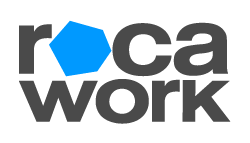The Rise of Shadow AI and How to Avoid It
As AI adoption accelerates across industries, a silent trend is growing in the background—employees using unapproved AI tools to ease their daily workload. While the intent is often productivity, the risks are real. Here's how organizations can get ahead of shadow AI and turn it into a strength rather than a threat.
What Is Shadow AI and Why It Happens
Shadow AI is the unsanctioned use of AI tools by employees without approval from IT or leadership. When organizations fail to offer modern, efficient tools, employees look for alternatives on their own. These tools help them avoid repetitive, time-consuming tasks. But without oversight, this behavior can expose sensitive data and create operational blind spots. In short, employees are seeking efficiency—if companies don’t provide it, they'll create their own solutions.
The Risk to Data and Security
Up to 90% of shadow AI users have shared sensitive company or customer data with external tools. This opens the door to major privacy violations, potential data leaks, and even legal consequences. It’s critical that companies proactively provide AI solutions that are secure, vetted, and compliant with data protection regulations. Investing in enterprise-grade AI tools that keep all workflows within the organization's ecosystem is essential for minimizing risk.
Building Smarter Workflows with Trusted AI
Rather than banning AI, companies should focus on integrating it directly into their workflows. When AI is embedded into customer support tools or internal platforms, it helps teams deliver consistent, high-quality service while maintaining full control over data usage. AI integrated at the system level not only increases productivity but aligns with privacy policies and internal standards.
Learning, Adapting, and Acting in Real Time
Unlike shadow AI, which is fragmented and uncontrolled, company-approved AI becomes smarter over time. It learns from workflows, adapts to business needs, and provides real-time insights that support better decisions. This data-driven approach allows businesses to identify patterns, optimize operations, and anticipate customer needs. AI isn't just a tool—it's a strategic partner when used correctly.
Conclusion
Ignoring the rise of shadow AI can lead to fractured workflows, lost data, and unhappy teams. But by offering secure, embedded AI solutions, organizations can meet employee needs, improve retention, and boost performance. Tools like Zendesk’s integrated AI for quality assurance and workforce management are examples of how AI can uplift both team morale and customer satisfaction. In the end, happy teams build better experiences.
Let’s get to know each other!
